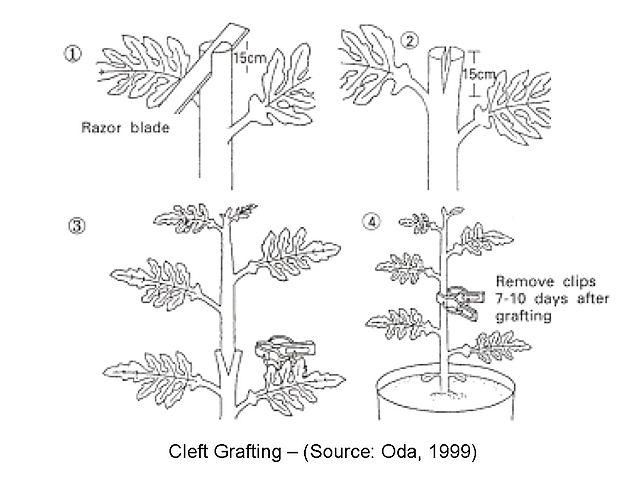Difference Between Budding and Grafting
Table of Contents
Budding vs Grafting
The different techniques followed in grafting and budding signifies the difference between them. Grafting and budding are two horticultural techniques that are used to produce new plants by means of asexual propagation. Both these techniques can be described under the method known as graftage, which is joining of a scion (shoot or bud) of a desired plant or cultivar to a plant with established root system (rootstock). Once joined, both scion and rootstock grow as a single plant, known as budded plant. These two methods are used as the principle methods of propagation of mainly fruit trees.
What is Grafting?
In grafting, part of the stem or branch with 3-4 vegetative buds is used as a scion or scion wood. Top most buds of the stem part and the lower buds should be removed. Then, the joining of scion to the rootstock can be performed using various techniques of grafting. Some of the grafting techniques as follows.
Cleft Graft – the ‘v’ shaped rootstock is connected to scion.
Bark Graft – scion is inserted to a flap cut on cambium.
Splice grafting– rootstock and scion are cut diagonally to overlap each other.
Whip graft (tongue graft) – rootstock and scion are cut in order to have interlocking tongues.
Side-veneer graft – scion is inserted into removed wedge of the rootstock.
Saddle graft – scion (‘v’ shaped) is inserted into a rootstock with inverted ‘v’ cut.
Bridge graft–used to bridge a diseased area of a rootstock with healthy scions.
Above methods vary from one another by the way of preparation of scion in order to insert it into the rootstock.


Whip Grafting
What is Budding?
In budding, a single bud is used as the scion instead of a stem cutting containing many buds as used in grafting. Insertion of a bud into the stem of rootstock may vary according to the species. Methods of budding include the following.
T-bud – Scion is inserted into ‘T’ shaped incision in rootstock.
Inverted T-budding – Similar to T budding except horizontal cut is made at the bottom of the vertical cut.
Chip-budding – Only the bud containing part of the scion is attached to a rootstock.

T Budding
What is the difference between Budding and Grafting?
Grafting and budding are methods of vegetative propagation of plants. Both methods are used to produce improved cultivars that are difficult to propagate by other methods such as cuttings, layering, or using seeds. Also, these methods can be used to add or change the existing varieties by incorporating new varieties as scion to the existing rootstock. In both methods, cambium layers of the scion and the stock should be in proper contact in order to form new plant. Both methods are useful to propagate many plants in a small area of land.
• Scion:
• In budding, a small bud is used as a scion.
• In grafting, part of a stem or a branch is used as the scion.
• Fruit Tree Production:
• Budding is more commonly used for fruit tree production than that of grafting.
• Expertise in Handling:
• Budding requires less expertise in handling than grafting.
• Time:
• Budding is less time-consuming than grafting.
• Size of Scion:
• Budding needs smaller scion when compared to the grafting.
• Success Rate:
• The highest success of grafting or budding can be achieved by grafting closely related species and clones.
• Limits:
• However, Monocotyledonous plants cannot be grafted as they do not possess cambium.
• Furthermore, monocot cannot be grafted onto a dicot plant.
• Trees:
• Commonly used fruit trees for budding – peach, apple, plums, cherry, citrus.
• Commonly used fruit trees for grafting – pears and avocado.
Images Courtesy:
ncG1vNJzZmivp6x7pbXFn5yrnZ6YsqOx07CcnqZemLyue8OinZ%2Bdopq7pLGMm5ytr5Wau26u1J2boqaXYq6vsIyvqmafopaztbXNoGY%3D